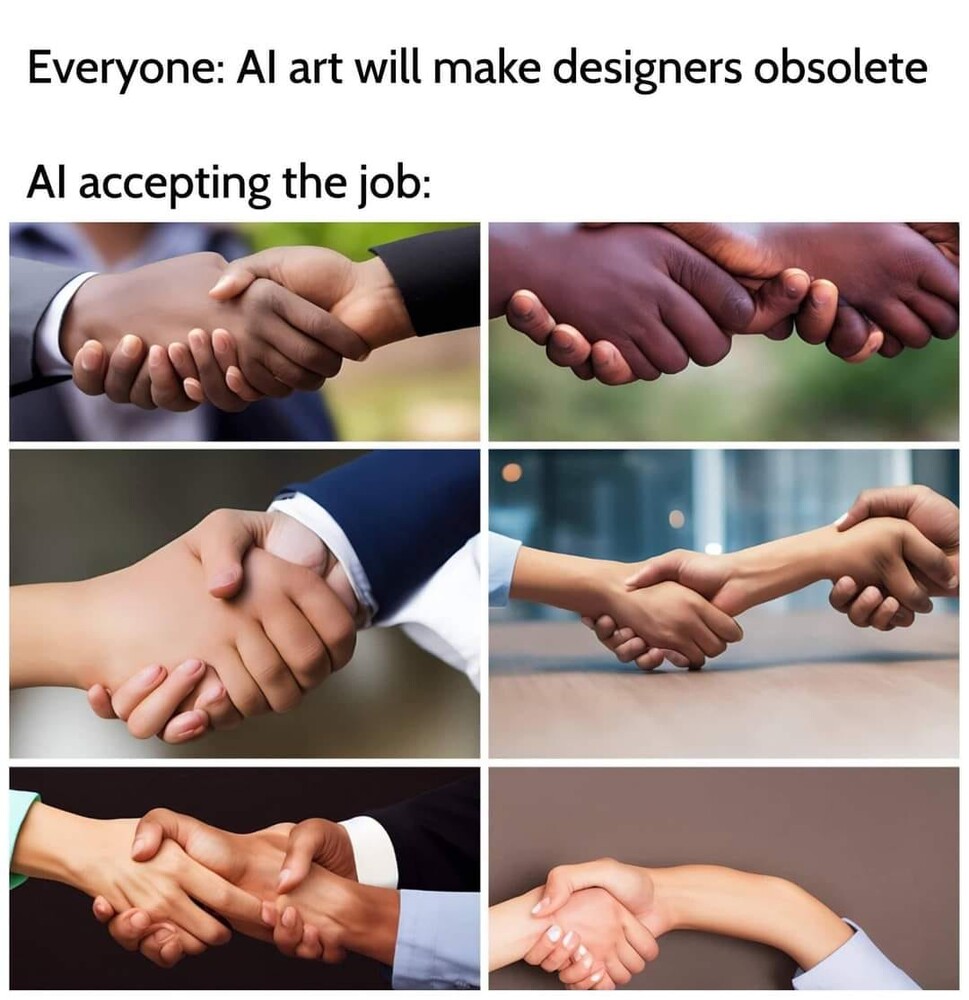
Generative AI tools took off like wildfire in 2022 and are likely to keep growing in relevance and disruptive potential in 2023. More organizations will dedicate resources towards developing in-house AI strategies, and more investment is likely to be allocated towards R&D than ever before. What does this mean for leaders who are responsible for acquiring human and technological resources towards innovative, sustainable projects?

Hanging out with your AI is surprisingly common.
Changing Times
We are poor judges of determining which types of work that technology will disrupt. History is awash with moments of professions unwittingly replaced by tools, made irrelevant by technological change.
This happens because the intelligence which has to be made artificial, is impossible to pin down and measure. Science doesn’t offer a universal, quantifiable model for determining and measuring intelligence, instead we make a series of assumptions about which jobs arr easier to perform and therefore subject to automation, like truck driving or teachning, as were the predictions of the recent past.
In actuality, the great job crunch is not starting at the “bottom of the pyramid” of job desirability, but towards the top, with the nature of creative and analytical jobs quickly adapting this new reality (see this ad from Fiverr or this one by MintMobile).
Generative models are solving the “blank page problem” for creating media of all kinds: images, text, code, music – and these will soon turn multimodal, allowing a single prompt to generate creations all kinds possible media types including video, immersive environments and characters.
Professionals are quick to learn & incorporate AI tools into their workflows. Creatives I know are experimenting with tools like Dall-E to quickly compose first drafts, data analyst are using PowerBI’s text analytics to automatically map database fields, and coders using Github CoPilot or ChatGPT to flesh out and test MVPs in hours instead of weeks.
Having access to on-demand intelligence is augmenting our creative and analytical skills, and will lead to replicating other kinds of intelligence as we progress into the future.
Master Your Tools
Winners are likely to be those who harness machine intelligence across their entire workflow.
The defeat of Kasparov to IBM's Deep Blue in 1997 quickly gave rise to “Centaur” or freestyle chess. In centaur games, players combine their own knowledge of the game with that of computers, databases and AI applications of all kinds. Instead of pitting them against each other, hybrid players use every tool available at their discretion, and for a while regularly outperformed both supercomputers and grandmasters in blind matches. Todays AIs play neck-to-neck with centaur players, but many forms of player-machine symbiosis are possible.
The best freestyle players (and Kasparovs own TED talk) excellence in hybrid chess stems from having better interface with machines than your opponent. Know your apps, stay updated, practice regularly. The playing field might be level, but knowing your tools is a safe strategy.
Leaders everywhere are struggling to release of generative AI tools, opportunities for upgrading their organizations technology stack, leaving all us responsible for responsibly incorporating AI into our workforce.
It’s too soon to tell what will eventually work when it comes to employing AI tools in our projects and teams. Different fields will approach the space from distinct perspectives - what works for a creative agency will not work for software development team - but a few concerns can be anticipated.
As someone who has observed the space for a while, I propose a set of four sets of areas of responsibility to consider for yourself and your team members as you start designing an AI strategy for the organization:
1. Training Data
AI tools require human creativity to feed their models – data that isn’t always correctly licensed or compensated. Artists, creators and developers publishing their work on the web are rarely recognized in the machine generated output, and need to be considered as we develop further reliance on AI tools.
- Who created the original data?
- How was it scraped?
- Was the license respected?
- Which biases have been considered?
- Which prompts were considered and discarded?
- Who is fact checking the results?
It bears repeating that AI is as good as your data. AI tools leverage both internal and external datasets, and it is likely your job to learn as much as possible about available data and promoting an analytical mindset in your department and beyond.
–
2. Business Model
Free tools have hidden costs; learn about the companies and funders behind yours.
- What are the business models of the tools you are using?
- What rent is being extracted?
- Who is gaining from your use of the tool?
- What are mechanisms for distributing economic surplus to all stakeholders?
- Who will be hired and who will be fired?
–
3. Upskilling
Merging human and machine intelligence is all about improving our ability to learn from and grow with technology. Consider how the people in your organization will change in skill and qualification in the scenario of AI growing in relevance.
- How are people augmented by implementing these technologies?
- How are human abilities being used in their best possible capacity?
- How will the use of these tools change the job landscape in your industry and beyond?
- Which skills should you optimize for in this new landscape of work?
–
4. Regulation
Know your liability and that of your tools. Find the time to understand ethical implications of all technology, especially AI.
- Which laws and ethical questions need to be considered in using these tools?
- Which biases are present in the training data or business model?
- What are potential second-order effects of using this technology in the long term?

I hope this meme feels old soon.
Mental Models
It is safe to assume that more of our time moving forward will be spent using intelligent tools to help with work and personal challenges.
Like many technologies of the past, AI will be terribly impactful for a while, fade into the background for a while until finding disruptive use cases, before eventually reshape entire segments of our economy, education and work. Who will be affected first is unknown, but knowing how to harness its effects is a safe strategy.
Consider all technology as symbiotic with humanity. The same way we cannot live without technology, technology does not have a future without humans investing and developing it. Nature is rife with models for symbiotic relationships - from the predatory and parasitic, to mutually beneficial ones. We are in charge of this balance, and should choose wisely how to proceed.
Decide for yourself the relationship you’d like develop with intelligent tools. Are you looking for a teacher, or someone to instruct and help shape your understanding? Are you looking for a coach, or someone to guide you through difficult choices and help set priorities? Or are you looking for a partner, someone to deeply trust and rely on? Knowing what you need is the first step toward choosing the right tools.

Symbiosis takes many forms, with different balance of benefits for each species.
Expectations for 2023
The shift towards AI is well underway and I expect record-breaking investments and breakthroughs announced during the year ahead. Unimaginable amounts of energy and intelligence will be created in unexpected places, and radical shifts of costs will keep taking place within organizations and they reassess how to allocate resources. Organizations of all kinds concerned about the future are investing in developing their AI and data strategies.
Expect technology-focused activities like Formula-E racing to leverage more “AI native” features, like having bots copiloting the vehicles, or sports like football incorporating bots into VAR and machine-assisted arbitration.
Now that about all available data on the internet has been vacuumed up to train transformer models, we’ll see greater efforts towards discerning between “human-made”, “machine-made” and hybrid content across all media. Tools like GPT-Zero will become more ubiquitous in browsers and social networks, helping users determine the source of what they’re reading.
Finally, we’ll see a lot more people “winging it” with AI tools in areas with required domain knowledge, like law and engineering. Lawyers are fighting against allowing ChatGPT as legal defense for contesting traffic tickets in court. Expect a wave of AI tools both passing blind tests used for “cheating” possible.
Technologies to keep an eye on:
- Multimodal transformers: next-generation chat interfaces will seamlessly blend text, images, music, 3D models, video in their output.
- Chaining: AI tools interfacing with one another, allowing multiple AIs in sequence, and picking between models on the fly.
- Personal data sensemaking: Our trust in tech companies is arguably at a low, making them unlikely candidates for system-wide data collection. I suspect offline-first tools like rewind.ai to further integrate into creative and time-keeping workflows in enterprises.
- Next-generation architectures: Models like GPT-4 are well underway, promising much larger instruction sizes and parameters. Similar efforts can be expected from the industry at large, ensuring that generative models are taking baby steps towards greater complexity.
Augmented or symbiotic intelligence is nothing new. Centaurs are about learning from the best practitioners in fields where hybrid approaches have long taken hold, in order to anticipate how AI is likely to affect our own fields.
Thanks
Thanks to Caroline Barrueco, Rodrigo Turra, Luma Eldin, Dave de Bakker, Larissa Akemi and Nik for reviewing drafts of this essay and providing invaluable feedback.
Notes on creating centaurs with AI tools:
- Stable Diffusion and Dall-E struggled with prompts describing either the greek mythological creature human-horse hybrids, leaving me with hundreds of horrible permutations. I ended up using Full body details of legendary creature “centaur” with human face. Greek mythology. Studio portrait lighting using Stable Diffusion 1.5
- ChatGPT understands the centaur concept and answer questions, including which skills humans should focus on instead.
- Siri insists on parsing “centaurs” as “Sun Towers”, which has a nice ring to it.